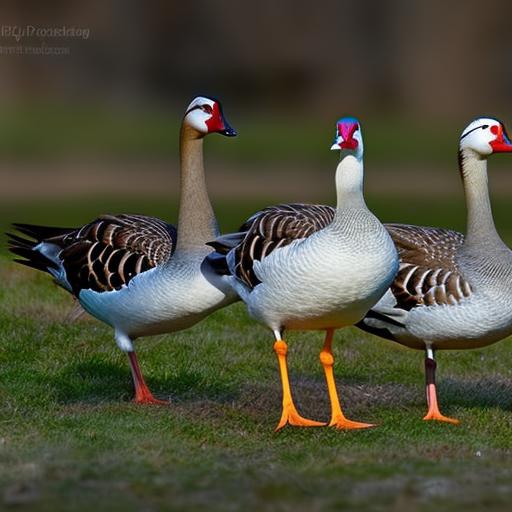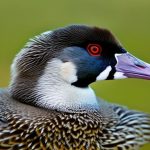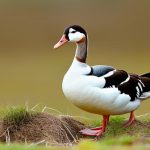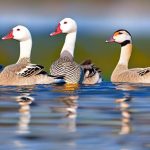Introduction to Geese: History and Domestication
Geese are fascinating birds that have a long history of domestication. They have been raised for centuries for their meat, eggs, and feathers. Geese were first domesticated in ancient Egypt and were highly valued for their ability to lay large eggs and provide a source of meat. They were also used as guard animals, as they are known for their loud honking and aggressive behavior towards intruders.
Geese have played an important role in agriculture and food production throughout history. They are efficient grazers and can be used to control weeds and pests in fields. Their manure is also a valuable source of fertilizer. In addition, geese are known for their ability to lay large eggs, which are prized for their rich flavor and high nutritional value. Geese are also raised for their meat, which is lean and flavorful.
Popular Breeds of Geese: A Comprehensive Overview
There are many different breeds of geese, each with its own unique characteristics and qualities. Some popular breeds include Toulouse geese, Chinese geese, Embden geese, African geese, Sebastopol geese, Pilgrim geese, and American Buff geese. When choosing a breed of geese, it is important to consider your specific needs and goals.
Toulouse Geese: Size, Appearance and Temperament
Toulouse geese are one of the largest breeds of geese. They have a heavy build and can weigh up to 30 pounds. They have a grayish-blue plumage with a white underbelly. Toulouse geese are known for their calm and docile temperament, making them a popular choice for backyard flocks. They are also good layers, producing around 30-40 eggs per year.
Toulouse geese thrive in open spaces with access to water. They require a large area to roam and graze, as well as a pond or pool for swimming. They are hardy birds and can tolerate a wide range of climates, but they do best in moderate temperatures.
Chinese Geese: Unique Characteristics and Breeding Habits
Chinese geese are known for their unique appearance and distinctive knob on their beak. They have a slender build and can weigh up to 12 pounds. Chinese geese come in a variety of colors, including white, gray, and brown. They are known for their loud honking and aggressive behavior, making them excellent guard animals.
Chinese geese are prolific layers, producing around 50-60 eggs per year. They are also good meat birds, with a flavorful and tender meat. Chinese geese require a large area to roam and graze, as well as access to water for swimming. They are hardy birds and can tolerate a wide range of climates.
Embden Geese: Physical Features and Personality Traits
Embden geese are large, white geese with a graceful appearance. They have a heavy build and can weigh up to 30 pounds. Embden geese are known for their friendly and docile temperament, making them a popular choice for backyard flocks. They are also good layers, producing around 25-35 eggs per year.
Embden geese require a large area to roam and graze, as well as access to water for swimming. They are hardy birds and can tolerate a wide range of climates, but they do best in moderate temperatures.
African Geese: Adaptability and Distinctive Honking
African geese are medium-sized geese with a distinctive appearance. They have a grayish-brown plumage with a white underbelly. African geese are known for their adaptability and ability to thrive in various climates. They are also known for their loud honking, which is unique to this breed.
African geese are good layers, producing around 20-30 eggs per year. They are also good meat birds, with a flavorful and tender meat. African geese require a large area to roam and graze, as well as access to water for swimming. They are hardy birds and can tolerate a wide range of climates.
Sebastopol Geese: Feather Patterns and Care Requirements
Sebastopol geese are known for their unique feather patterns and curly feathers. They have a slender build and can weigh up to 12 pounds. Sebastopol geese come in a variety of colors, including white, gray, and brown. They are known for their friendly and docile temperament, making them a popular choice for backyard flocks.
Sebastopol geese require a large area to roam and graze, as well as access to water for swimming. They are hardy birds and can tolerate a wide range of climates.
Pilgrim Geese: Dual-Purpose Birds and Egg Laying Abilities
Pilgrim geese are medium-sized geese with a distinctive appearance. They have a grayish-brown plumage with a white underbelly. Pilgrim geese are known for their dual-purpose nature, as they are good layers and meat birds. They are also known for their calm and docile temperament.
Pilgrim geese require a large area to roam and graze, as well as access to water for swimming. They are hardy birds and can tolerate a wide range of climates.
American Buff Geese: Heritage Breed and Meat Production
American Buff geese are medium-sized geese with a distinctive appearance. They have a light tan plumage with a white underbelly. American Buff geese are known for their heritage breed status and their excellent meat production. They are also known for their calm and docile temperament.
American Buff geese require a large area to roam and graze, as well as access to water for swimming. They are hardy birds and can tolerate a wide range of climates.
Geese for Small Farms: Bantam and Miniature Breeds
For small farms and backyard flocks, bantam and miniature breeds of geese are a popular choice. These breeds are smaller in size and require less space compared to larger breeds. Bantam and miniature geese are known for their friendly and docile temperament, making them suitable for families with children.
Bantam and miniature geese require a smaller area to roam and graze, as well as access to water for swimming. They are hardy birds and can tolerate a wide range of climates.
In conclusion, geese are fascinating birds that have been domesticated for centuries. There are many different breeds of geese, each with their own unique characteristics and ideal living conditions. Whether you are looking for a dual-purpose bird for meat and egg production or a small breed for your backyard flock, there is a goose breed that will fit your needs.
If you’re interested in learning more about breeds of geese and their unique characteristics, you might also find this article on poultrywizard.com intriguing. It provides valuable insights into the different types of geese and their specific traits, helping you make an informed decision when choosing the perfect breed for your farm or backyard. To further expand your knowledge on poultry, you can also check out their other informative articles such as chicken coop run plans and the chicken coop country diner. Additionally, if you’re curious about whether guinea fowl can live with chickens, they have an insightful article on that topic too: can guinea fowl live with chickens?
FAQs
What are the different breeds of geese?
There are several breeds of geese, including Toulouse, Embden, African, Chinese, and Canada geese.
What are the characteristics of Toulouse geese?
Toulouse geese are large and heavy, with a grayish-blue plumage. They are known for their calm and docile temperament, making them popular as pets.
What are the characteristics of Embden geese?
Embden geese are also large and heavy, with a white plumage. They are known for their strong and hardy nature, making them popular for meat production.
What are the characteristics of African geese?
African geese are medium-sized with a grayish-brown plumage. They are known for their loud and vocal nature, making them popular as watchdogs.
What are the characteristics of Chinese geese?
Chinese geese are small and lightweight, with a white or grayish-brown plumage. They are known for their graceful and elegant appearance, making them popular as ornamental birds.
What are the characteristics of Canada geese?
Canada geese are large and heavy, with a brownish-gray plumage. They are known for their strong and migratory nature, making them popular for hunting and wildlife observation.
Meet Walter, the feathered-friend fanatic of Florida! Nestled in the sunshine state, Walter struts through life with his feathered companions, clucking his way to happiness. With a coop that’s fancier than a five-star hotel, he’s the Don Juan of the chicken world. When he’s not teaching his hens to do the cha-cha, you’ll find him in a heated debate with his prized rooster, Sir Clucks-a-Lot. Walter’s poultry passion is no yolk; he’s the sunny-side-up guy you never knew you needed in your flock of friends!







